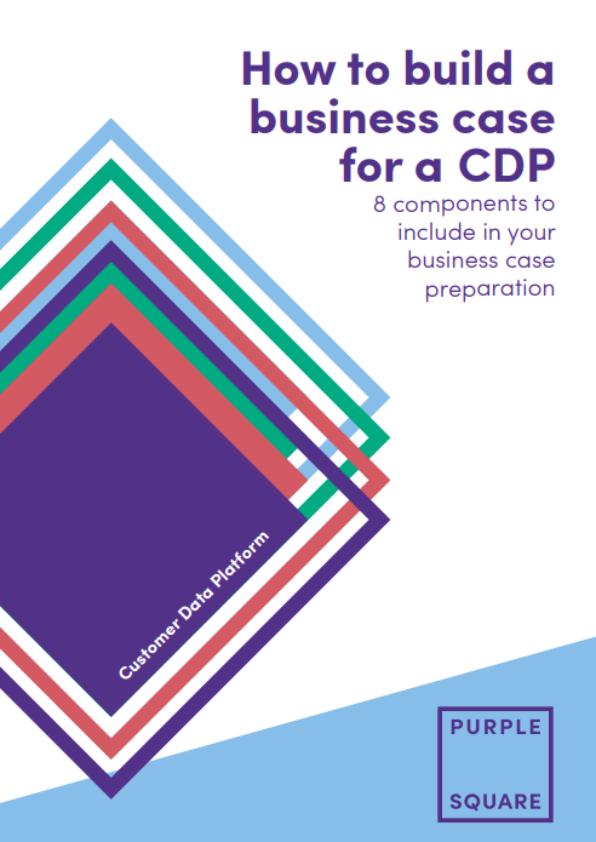Vanquis Bank’s Atiq Sajawal on creating a frictionless customer experience in financial services
Purple Square have been speaking to customer experience leaders from top global brands about Reimagining Customer Experience (CX). In this interview Tim Biddiscombe speaks to Atiq Sajawal, Head of Digital Channels at Vanquis Bank on creating a frictionless customer experience in financial services.
As digital banking continues to evolve and customers become ever more reliant on credit cards, some financial services institutions are slower to move than others. Stories of clunky apps, complicated online forms and long waits for call centre representatives seem to outnumber those of standout customer service. When it comes to digital banking, some of the obstacles we encounter are down to regulations that keep our data, accounts and money safe, but compliance and security do not need to come at the expense of a clear, frictionless customer experience.
When designing their website, Vanquis used an external service to test the readability of other financial services sites. “The average reading age for websites in our sector is 45 years, which is basically the equivalent of Stephen Hawking. The average reading age in the UK is actually around 12,” said Sajawal. “There is a huge disparity in what information is available online and what people understand. Whether they’re applying for a credit card or a 25 year mortgage, people need to understand what they are signing up for.”
Creating clear paths and providing easy to understand guidance and information need to be at the root of any good customer experience, especially when it comes to complicated industries like financial services.
“When it comes to CX, I believe that making things as easy as possible for customers is the ultimate way to achieve ‘surprise’ and ‘delight’,” said Sajawal. “Customers should be able to easily interact and access the information they need through their channel of choice.”
Keeping pathways open
By their very nature, banks and credit card companies have to deliver bad news to customers on occasion, but this does not necessarily need to be the end of their relationship.
“If someone applies for a credit card and is rejected because they don’t meet the criteria, it can be a blow to their morale, but it no longer has to be a jarring experience of being declined and feeling abandoned,” explained Sajawal.
By partnering with credit building tool companies like Loqbox, Vanquis is able to refer those who are declined down a different path to help them build their credit score and profile.
“Rather than simply vanishing, we can help make a difficult process less painful by providing customers with alternative resources that can offer the support they need, giving them a route back to us and try again.”
Even when credit card applications are accepted, the process is not always straightforward for customers. “In some cases we need more information from people to make an informed decision on whether a credit card is right for them,” said Sajawal. “For example, how much they spend on rent, food or expenses each month.”
While they might not lose a customer at this stage of the journey, it does slow down the process and can cause frustration and anxiety for applicants. “Questions like these are necessary on our end, but they can be annoying for the customer as they don’t always have this information to hand,” he continued.
“We try to make this process easier for customers by asking them what information they do have available, such as a current account. We can then connect to solutions like open banking and eliminate the need for them to identify, calculate or type in these details.”
Clear communication and reassurance
Setting appropriate expectations, keeping customers informed and empowering them to solve small issues are also essential in creating the most friction-free customer experience possible. This can be down to the wording on a website, regular newsletters to check in and relevant, easy to use self-service options informed by actual user experiences.
Sajawal explains how he was reassured and inspired by daily notifications from his energy company before the days of smart meters. “The company was app-based and had no call centre or contact details. At first I was nervous about their support, but they proved to be amazing. By keeping me informed each day on my energy use and how much credit I had, I didn’t need to do anything. Their reassurance meant I didn’t feel the need to check in.”
Having learned from this model, Vanquis provides regular updates to keep its customers informed, which not only provides them with a similar level of the reassurance that Sajawal felt, but means customers don’t need to turn to the bank’s contact centres for general requests. In addition, their website includes interactive FAQs and informative, easy to understand videos, making it as straightforward as possible for customers to take care of simple issues themselves without needing to wait in a call centre queue.
“Contact centres should be for hand-holding in emotional and high value situations, not for changing passwords,” explained Sajawal. “Providing easy to use self-service options, helps customers to save time by solving small issues themselves. This not only improves their experience, but helps free up contact centre staff to deal with more challenging requests.”
Testing, testing, testing
In addition to interactive online content, machine learning can play a role in providing a smooth customer experience. Used in conjunction with data and analytics, the technology helps ensure self-service features like interactive FAQs stay relevant. It can also help to flag inconsistencies so banks can spot if someone is heading into difficulty and adjust their communications accordingly.
Sajawal explained: “In the current climate, we find that people are using credit cards much more, even for smaller transactions. We want people to make informed decisions and to help keep an eye on the ebb and flow of spending, so we’re looking at applying machine learning on top of our data to surface some of these trends to help make sure they are using their card responsibly and not using the full limit each month.”
As with any technology, testing is paramount to ensure it enhances the user experience. Vanquis tests all of its journeys with a cross section of customers to ensure they can cater the experience to those with specific accessibility issues or financial needs.
“It’s not a one-size fits all approach,” explained Sajawal.
For example, in recent user testing of machine learning-driven journeys, Vanquis worked with a customer who was financially savvy and a model customer who never missed a payment. “However, we discovered this was not down to the automatic payment reminders we had in place for her. Due to her personal circumstances our automated reminders didn’t work for her, so she had to leave hand-written notes to remind her of what bills were due when. She lived in a rural location, so could not rely on internet or mobile connections to receive our reminders.”
“Machine learning and customer testing help to surface these kinds of examples and allow us to adjust and improve the experience for each of our customers. This scenario led us to consider how to allow users to customise their payment reminders to ensure they work for them and their particular situation.”
At the heart of a smooth, frictionless customer journey is the fact that people are unpredictable.
“Customers will always surprise you,” concluded Sajawal. “You can make all sorts of assumptions about how people are going to interact with something and there’ll always be a cohort of customers who do exactly the opposite of what you expected. We’d be guessing without the data.”
Like what you see?
Subscribe to our newsletter for customer experience thought leadership and marketing tips and tricks.




